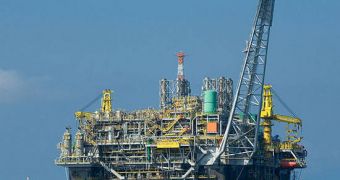Freak waves are phenomena of nature difficult to explain even for oceanographers. They are essentially oceanic surface waves much larger than those around them. That is to say, they are larger than the mean height of the third waves in a wave group, which entails that they may not be the largest in the ocean per se. They are just, as researchers put it, abnormally large for a certain sea state. They are extremely dangerous for cruise ships, cargo ships, liner and oil platforms, and a team of researchers now believes that they may have found an explanation as to why they form and where.
Historically, evidence of such waves has been recorded in all cultures, and over thousands of years, but it wasn't until 1995 that the first scientific reading was made, at the Draupner oil platform, in the North Sea. The rogue wave was thus called the “Draupner wave.” These monsters of the sea can grow to be 15 meters (49 feet) in height, although levels as large as 35 meters (110 feet) have also been recorded. Recent studies have identified the fact that they occur all around the world, in all oceans, and have prompted a reconsideration of their causes, as well as a rethinking in the design of oceanic ships.
Researchers Tim Janssen, from the San Francisco State University (SFSU), and Thomas HC Herbers, from the Naval Postgraduate School, in Monterey, California, have recently developed a computer simulation that shows the most probable areas to allow for these waves to form – regions that exhibit variations in water depth and strong currents, the BBC News informs. Details of the model are published in the latest issue of the Journal of Physical Oceanography.
The origin of a rogue wave is known as a “wave focal zone,” the area which spawns the most brutal such phenomena. In these regions, wave energy is concentrated into a single point by sandbanks and strong currents. Waves traveling here can suddenly change direction and height, and can even move ahead against the prevailing winds and currents, accumulating height as it goes. When it meets a ship head-on, there is little chance for the vessel, even if the largest ships ever made are involved.
“In a normal wave field, on average, roughly three waves in every 10,000 are extreme waves, In a focal zone, this number could increase to about three in every 1,000 waves,” Janssen explains. “What's really important about this research, is that it is easy to validate. We have a theory now, a prediction, and we can go to areas and actually measure whether this happens or not,” he added for the news outlet.

 14 DAY TRIAL //
14 DAY TRIAL //